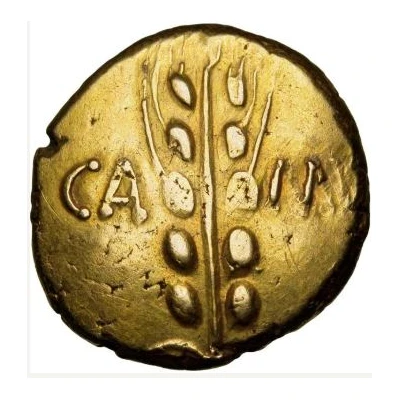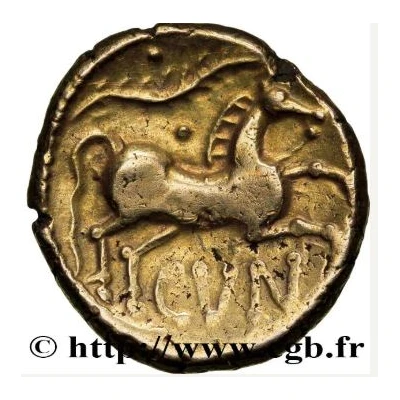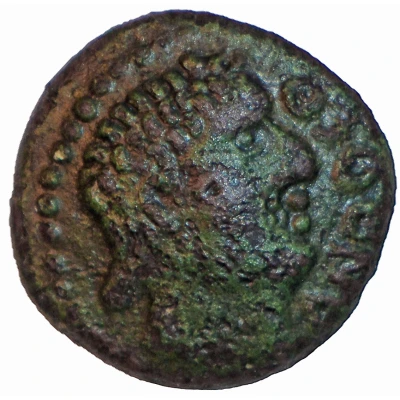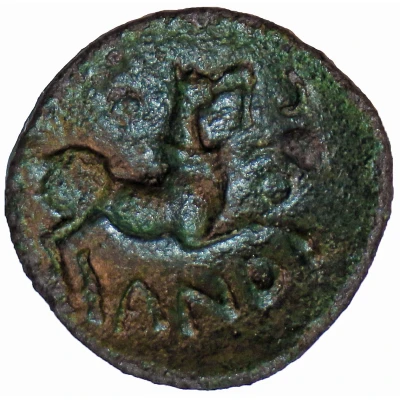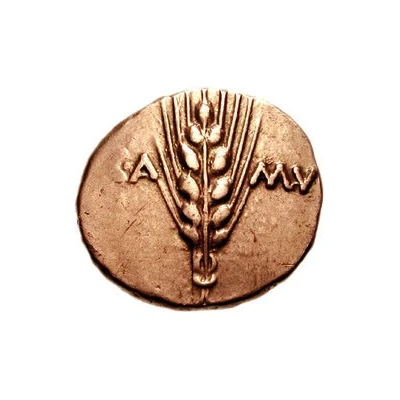
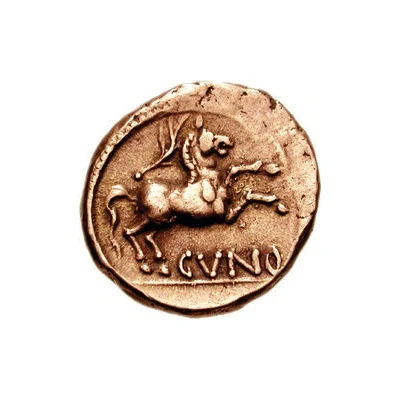

© Classical Numismatic Group, Inc.
Stater "Trinovantian X" - Cunobeline
| Gold | 5.4 g | 18 mm |
| Issuer | Catuvellauni tribe (Celtic Britain) |
|---|---|
| King | Cunobeline (circa AD 9-40) |
| Type | Standard circulation coin |
| Years | 10-43 |
| Value | Gold Stater (1) |
| Currency | Stater |
| Composition | Gold |
| Weight | 5.4 g |
| Diameter | 18 mm |
| Thickness | 1.5 mm |
| Shape | Round (irregular) |
| Technique | Hammered |
| Orientation | Coin alignment ↑↓ |
| Demonetized | Yes |
| Updated | 2024-10-09 |
| Numista | N#117483 |
|---|---|
| Rarity index | 94% |
Reverse
Romanized horse right, branch above.
Script: Latin
Lettering: CVNO
Translation: Cunobelin
Edge
Plain.
Comment
"Cassic" Type ; BMC 1827-31/33Styled as son of Tasciovanus on some of his coins, Cunobelin appears to have ruled over the unified territories of the Trinovantes and Catuvellauni, with additional territory in Kent. He is the subject of Shakespeare's "Cymbeline."
It has been estimated from a study of known dies that around one million of his gold corn ear staters were produced and his main centre and mint was at Camulodunum (Colchester).
Interesting fact
One interesting fact about the Trinovantian X Stater coin is that it features a unique blend of Celtic and Roman influences in its design. The coin's obverse side bears the image of a Celtic warrior, while the reverse side features a Roman-style depiction of a chariot and horses. This blending of cultural styles reflects the complex history of Celtic Britain during the 1st century AD, when the region was under Roman occupation but still maintained its own distinct cultural identity.
